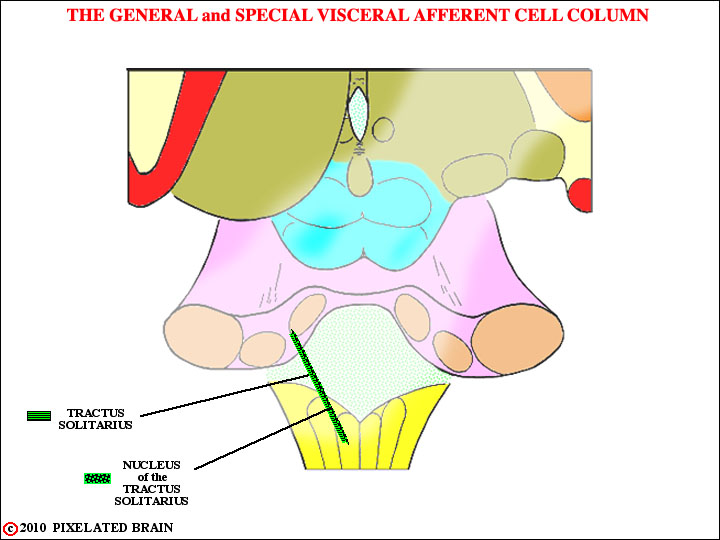
PIXBRAIN HOME _ _ MOD 8 HOME _ _ previous _ _ FIGURE 8-6_ _ next _ _ I WANT TO
Axons of cranial nerves VII, IX and X conveying the sense of taste (SVA) enter the brainstem within their respective nerves and travel upward in the Tractus Solitarius to terminate in the most rostral part of the Nucleus of the Tractus Solitarius, sometimes known as the gustatory nucleus. Second order neurons within the nucleus send fibers rostrally to terminate in the VPM nucleus of the thalamus. The pathway is probably bilateral, and runs near the ventral secondary trigeminal tract (Blumenfeld places it in the central tegmental tract). From the thalamus, the pathway ascends to a cortical region terminating laterally, near the tongue area of the postcentral gyrus and adjacent to the insula.
Axons of cranial nerves IX and X conveying general sensation (GVA) from the viscera enter the brainstem and travel downward in the Tractus Solitarius to terminate in the caudal part of the nucleus. We are not consciously aware of these sensations. Neurons in this part of the nucleus send axons to terminate in a broad array of brainstem nuclei (the Dorsal Motor Nucleus of the Vagus, the Nucleu Ambiguus, the Reticular Formation) , thus participating in a variety of visceral and autonomic reflexes. Fibers also pass rostrally to provide an input to the Hypothalamus and Amygdala.
Ifyou want to have a little fun, try the QUIZ . Most books do not include the parabrachial nucleus in the taste pathway. It lies adjacent to the superior cerebellar peduncle (Brachium conjuntivum - hence, the name) in the rostral pons.